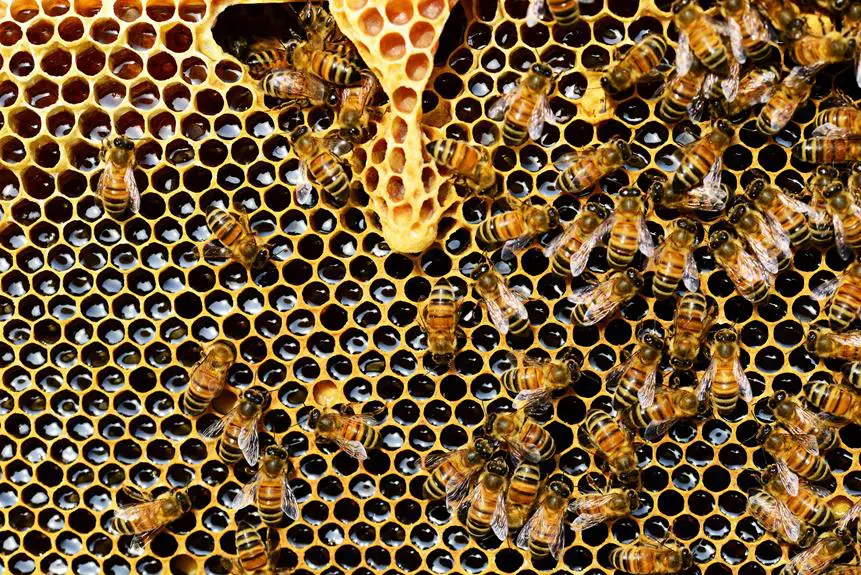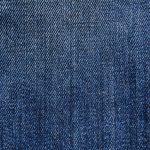When you're looking to protect your fabrics while embracing a sustainable lifestyle, using beeswax for fabric waxing can be a practical solution. You'll want to choose natural materials like cotton or linen and ensure they're clean before starting the process. Melting the beeswax is straightforward, but applying it evenly is where the magic happens. Once you've set the wax, you'll notice a transformation in your fabric's ability to repel moisture and grime. However, maintaining that waxed finish requires specific care, and you might be surprised at how simple it is to keep your creations in top shape.
Table of Contents
Key Takeaways
- Select natural fabrics like cotton or linen, ensuring they are clean and untreated for effective waxing.
- Melt pure beeswax using a double boiler or microwave, avoiding additives for the best results.
- Apply melted beeswax evenly on fabric using an iron or brush, working in small sections for uniform coverage.
- Cool the waxed fabric on a flat surface to set the wax and enhance moisture protection.
Understanding Beeswax Benefits
Why should you consider using beeswax for fabric waxing? First off, beeswax offers a natural, eco-friendly alternative to synthetic waxes. When you use it, you're not just enhancing your fabric; you're also making a conscious choice to help the environment. Beeswax is biodegradable and produced by bees, making it a sustainable option.
The benefits don't stop there. Beeswax creates a protective barrier against moisture, dirt, and bacteria. This means your fabrics will last longer, reducing the need for frequent replacements. You'll appreciate how it keeps your food fresh when you use it on wraps, preventing waste and saving you money.
Additionally, beeswax has a pleasant, subtle aroma that adds a unique touch to your projects. It's also non-toxic and safe for your family, which is crucial when you're using it for food-related items. You'll find that its versatility extends beyond just waxing fabric; it can be used in crafting, sewing, and even skincare.
Materials Needed for Waxing
To get started with fabric waxing using beeswax, you'll need a few key materials to ensure the process goes smoothly.
First, grab some beeswax. You'll want either a block of pure beeswax or pre-made beeswax pellets. If you're using a block, you'll need to grate it for easier melting.
Next, get your fabric. Choose a natural fabric like cotton, linen, or muslin, as synthetic fibers won't hold the wax effectively. A cutting board or parchment paper will serve as your workspace, protecting your surfaces from wax spills.
You'll also need an iron, which will help to melt the beeswax evenly into the fabric. Make sure you have a clean cloth or an old towel to place over the fabric while ironing to prevent direct contact.
Lastly, have a brush handy for spreading the melted wax if you're opting for that method instead of using an iron.
With these materials ready, you're all set to embark on your fabric waxing journey!
Preparing the Fabric
Before you start waxing, it's important to prepare your fabric properly.
You'll want to select suitable materials, wash and dry them thoroughly, and cut them to the right size.
This ensures the beeswax adheres well and provides the best results.
Selecting Suitable Fabrics
Choosing the right fabric is crucial for achieving the best results when waxing with beeswax. You'll want to select natural fabrics like cotton, linen, or hemp, as they absorb the wax effectively and provide durability.
Synthetic materials, such as polyester or nylon, don't hold the wax well and can even melt when heated, making them unsuitable for this process.
Consider the weight and weave of the fabric, too. A medium-weight cotton, like muslin or canvas, works beautifully, allowing the beeswax to penetrate while maintaining flexibility. Avoid fabrics with a tight weave, as they may not allow the wax to adhere properly.
For best results, use freshly washed and dried fabric that's free from any treatments or finishes.
Keep in mind that stretchy or slippery fabrics can be tricky to work with, so stick to those that are more stable. If you're using fabric for food storage wraps, ensure the fabric is untreated and food-safe.
Washing and Drying
Washing and drying your fabric properly is key to ensuring that the beeswax adheres effectively. Make sure to use a gentle detergent and avoid any fabric softeners. These products can leave a residue that interferes with the waxing process, compromising the fabric's ability to hold the beeswax.
When you wash your fabric, follow these guidelines for best results:
- Use cold water: It helps preserve the fabric's integrity and color.
- Air dry: This prevents shrinkage and maintains the fabric's texture.
Once your fabric is clean and dry, you'll be ready to move on to the waxing process.
Cutting to Size
To ensure your beeswax application is effective, cut the fabric to the desired size, keeping in mind the projects you have in mind. Whether you're making reusable food wraps, sandwich bags, or even craft projects, the size of your fabric plays a crucial role in functionality.
Consider the following sizes for your projects:
| Project | Recommended Size | Fabric Type |
|---|---|---|
| Food Wraps | 10” x 10” | Cotton |
| Sandwich Bags | 12” x 14” | Cotton or Linen |
| Craft Projects | Varies (e.g., 8” x 8”) | Cotton or Canvas |
Before cutting, lay out your fabric flat on a clean surface. Use a ruler to measure and mark your desired dimensions. A rotary cutter or sharp fabric scissors will give you clean edges, so you won't deal with fraying later. After cutting, double-check the sizes against your project requirements to ensure you've got what you need. With your fabric properly sized, you're ready to dive into the waxing process, ensuring a perfect finish for your creations!
Melting and Applying Beeswax
When you're ready to melt and apply beeswax, it's important to choose the right type for your project.
You'll want to explore effective melting techniques and understand the best application methods to get great results.
Let's break down these key points to make your fabric waxing process smooth and successful.
Choosing the Right Beeswax
Selecting the right type of beeswax is crucial for achieving the best results in fabric waxing. Not all beeswax is created equal, and choosing the right one can make a significant difference in the performance and durability of your finished product.
Here are some key factors to consider when choosing your beeswax:
- Purity: Opt for 100% pure beeswax without any additives. This ensures that your fabric will maintain its natural properties and that the wax adheres well.
- Color: Beeswax comes in various colors, from light yellow to dark brown. Lighter waxes often indicate a more refined product, while darker ones typically retain more natural impurities. Choose based on your aesthetic preference.
Melting Techniques Explained
Understanding how to melt and apply beeswax properly is key to achieving an even coating on your fabric for optimal performance and durability.
Start by choosing a suitable melting method. You can use a double boiler, which is one of the safest options. Fill the bottom pot with water, bring it to a simmer, and place your beeswax in the top pot. This gentle heat ensures even melting without burning the wax.
If you don't have a double boiler, a microwave can work, too. Place the beeswax in a microwave-safe container and heat it in short bursts of 20-30 seconds, stirring in between until it's fully melted. Keep a close eye on it to prevent overheating.
Once your beeswax is melted, prepare your fabric by laying it flat on a protected surface. Use a brush or a cloth to apply the melted wax evenly across the fabric. Make sure to cover all areas, paying special attention to the edges.
Regardless of the method you choose, always work in a well-ventilated space and avoid direct contact with the hot wax to ensure safety during the process.
Application Methods Overview
To successfully apply beeswax to your fabric, you'll want to choose an effective method that ensures an even and durable coating. There are a few popular techniques you can use for melting and applying beeswax, each with its own advantages.
- Ironing Method: You place a beeswax-coated fabric between parchment paper and use an iron to melt the wax evenly onto the fabric.
- Heat Gun Method: This involves using a heat gun to melt the beeswax directly onto the fabric, allowing for precise control over the application.
- Double Boiler Method: You can melt beeswax in a double boiler, then brush it onto your fabric for a more traditional approach.
Whichever method you choose, ensure your workspace is well-ventilated and that you work in small sections to achieve an even application.
After applying, let the fabric cool and set the wax, which will give it a protective layer against moisture and wear.
With these techniques, you'll have your fabric ready for a sustainable, waxed finish in no time!
Setting the Waxed Fabric
Setting the waxed fabric requires a careful approach to ensure the wax is evenly distributed and properly adhered.
Once you've applied the beeswax, it's essential to set the fabric to activate the wax. Start by placing the waxed fabric on a flat, heat-resistant surface.
Using a hairdryer or an iron on low heat, gently warm the fabric. If you're using an iron, place a piece of parchment paper or a thin cloth over the fabric to protect it from direct heat.
As you heat the fabric, the beeswax will melt slightly, allowing it to penetrate the fibers. Move the hairdryer or iron in smooth, even motions to avoid overheating any one spot. You'll notice the fabric becoming more pliable and the wax settling in.
After about a minute of heating, check the surface for an even sheen, which indicates the wax is properly set. Allow the fabric to cool completely in a flat position.
This process not only helps secure the wax but also improves the fabric's water resistance. With your waxed fabric set, you're ready to enjoy its benefits in your projects!
Caring for Your Waxed Fabrics
Caring for your waxed fabrics ensures they last longer and maintain their effectiveness, so it's important to follow a few simple guidelines.
First, always wash your waxed items by hand in cool water with a mild soap. Avoid using hot water or a washing machine, as this can damage the wax coating. After washing, gently pat your fabrics dry with a clean towel and let them air dry completely away from direct sunlight and heat sources.
Next, avoid exposing your waxed fabrics to high heat. This means steering clear of hot ovens or direct sunlight for extended periods, as heat can melt the beeswax and ruin your hard work.
Lastly, if you notice the wax starting to wear off, don't worry! You can easily re-wax your fabric to restore its protective qualities.
- Hand wash in cool water with mild soap
- Avoid high heat or direct sunlight
Creative Uses for Beeswax Wraps
Exploring the versatility of beeswax wraps opens up a world of sustainable solutions for your kitchen and beyond. These eco-friendly alternatives to plastic wrap aren't just for covering bowls or wrapping sandwiches; they can enhance your daily life in various creative ways.
First, use beeswax wraps to wrap fresh produce like half an avocado or a block of cheese. The wraps maintain freshness while reducing waste. You can also create snack packs for kids by wrapping nuts, fruits, or veggies for school lunches.
Additionally, consider using beeswax wraps as a mold for baking. Simply warm the wrap in your hands and shape it over a bowl or dish to create a non-stick surface for your dough. You can even use them for crafting; cut the wraps into shapes to make unique gift tags or decorations.
Lastly, beeswax wraps work wonders for covering leftovers. Instead of reaching for plastic containers, simply wrap your food and store it in the fridge. With these simple uses, you can embrace sustainability while enjoying the practicality of beeswax wraps in your everyday life.
Frequently Asked Questions
Can I Use Beeswax on Synthetic Fabrics?
You can use beeswax on synthetic fabrics, but results may vary. It's best to test a small area first to ensure it adheres properly and doesn't damage the material. Always follow care instructions for your fabric.
How Long Does the Beeswax Coating Last?
The beeswax coating typically lasts several months, depending on usage and washing. You can refresh it as needed by reapplying beeswax and heat, ensuring your fabric stays protected and functional for longer.
Is Beeswax Safe for Food Contact?
Yes, beeswax is generally safe for food contact. It's natural, non-toxic, and has antimicrobial properties, making it a popular choice for food wraps. Just ensure you're using high-quality, pure beeswax for the best results.
Can I Re-Wax My Fabric Multiple Times?
Yes, you can re-wax your fabric multiple times. In fact, regular re-waxing helps maintain its durability and effectiveness. Just make sure to clean it properly before applying more wax for the best results.
Will Beeswax Leave a Sticky Residue?
Yes, beeswax can leave a sticky residue if you apply too much or don't heat it properly. To avoid this, use a thin, even layer and ensure it's fully melted into the fabric.
- Boltaflex Heritage Chamois 535882 by Omnova Fabric: A Review - June 22, 2025
- How Does Chamois Fabric Feel Compared to Other Fabrics? - June 22, 2025
- Chamois Fabric Vs Flannel: Key Differences Explained - June 22, 2025





